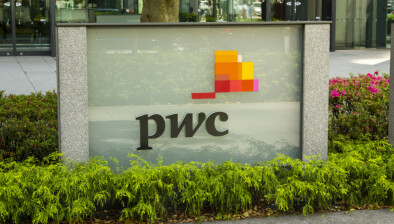PwC: Electronic payments at epicentre of financial services industry transformation

The financial services industry is in the midst of a significant transformation in electronic payments accelerated by the COVID-19 pandemic, according to a new report by PwC.
Payments are increasingly becoming cashless, and the industry’s role in fostering inclusion has become a significant priority. As digital money draws a stronger interest, the financial services industry must recognise the entire infrastructure of payments is being reshaped, with new business models emerging.
PwC’s survey reveals how even before the COVID-19 pandemic, cashless payments like sending a text to pay for a bus ticket in Turkey, or using a QR code to buy groceries in China are evidence of a steady shift to a digital economy - a shift that might ultimately lead to a global cashless society.
With global cashless payment volumes being predicted to increase by more than 80% from 2020 to 2025, from about 1tn transactions to almost 1.9tn, and to almost triple by 2030.
According to findings by PwC Asia-Pacific will grow the fastest, with cashless transaction volume growing by 109% from 2020 to 2025 followed by Africa (78% from 64%) and Europe (64% from 39%), Latin America comes next (52% from 48%), and the US and Canada will have the least rapid growth (43% from 35%).
Kurtis Babczenko, global banking and capital markets leader, and US finance transformation leader at PwC, said: “A cashless world is in plain sight. The COVID-19 pandemic reinforced an already growing shift to digital payments and likely drove a three- to five-year acceleration in their use. The acceleration towards digital payments will create new opportunities for the entire payment ecosystem, including banks. But it will also expose weaknesses for those not prepared to adapt.”
PwC findings reveal the key themes that are influencing the payments industry and highlights the importance of how the industry responds to these trends. The firm believes leadership teams of financial services businesses need to understand each of these trends in order to properly plan for their future.
In developing countries, financial inclusion will continue to be driven by mobile devices and access to affordable, convenient payment mechanisms. By 2025, smartphone penetration will likely reach 80% globally, largely via uptake in emerging markets such as Indonesia, Pakistan and Mexico.
CBDCs (Central Bank Digital Currencies) are predicted to have the biggest disruptive impact over the next 20 years. Looking ahead, 86% of PwC’s survey respondents agreed or strongly agreed with the prediction that traditional payment providers will collaborate with fintechs and technology providers as a main source of innovation.
Senior payment professionals surveyed expect important regional developments towards a payment infrastructure in which card and other transactions run on joint account-based payment rails. Key initiatives in Latin America, South-East Asia and Europe give testimony of this development.
In the PwC survey, 42% of respondents said they felt strongly that there would be an acceleration of cross-border, cross-currency instant payments and B2B payments in the next five years.
In the survey, security, compliance, and data-privacy risks and related issues were the top concern for banks, fintechs and asset managers in implementing a fully integrated technology strategy.
Kurtis Babczenko, added: “Aside from this shift to a cashless society, we need to also pay attention to a more profound change. Not only are consumers saying goodbye to traditional ways of paying for goods and services—including the humble paper check and analogue invoices, but the entire infrastructure of payments is being reshaped.
“That reshaping involves two parallel trends: an evolution of the front- and back-end parts of the payment system (instant payments; bill payments and request to pay; and plastic cards and digital wallets); and a revolution involving huge structural changes to the payment mix and ecosystem (emergence of so-called ‘buy now, pay later’ offerings; cryptocurrencies; and work underway on central bank digital currencies.”





